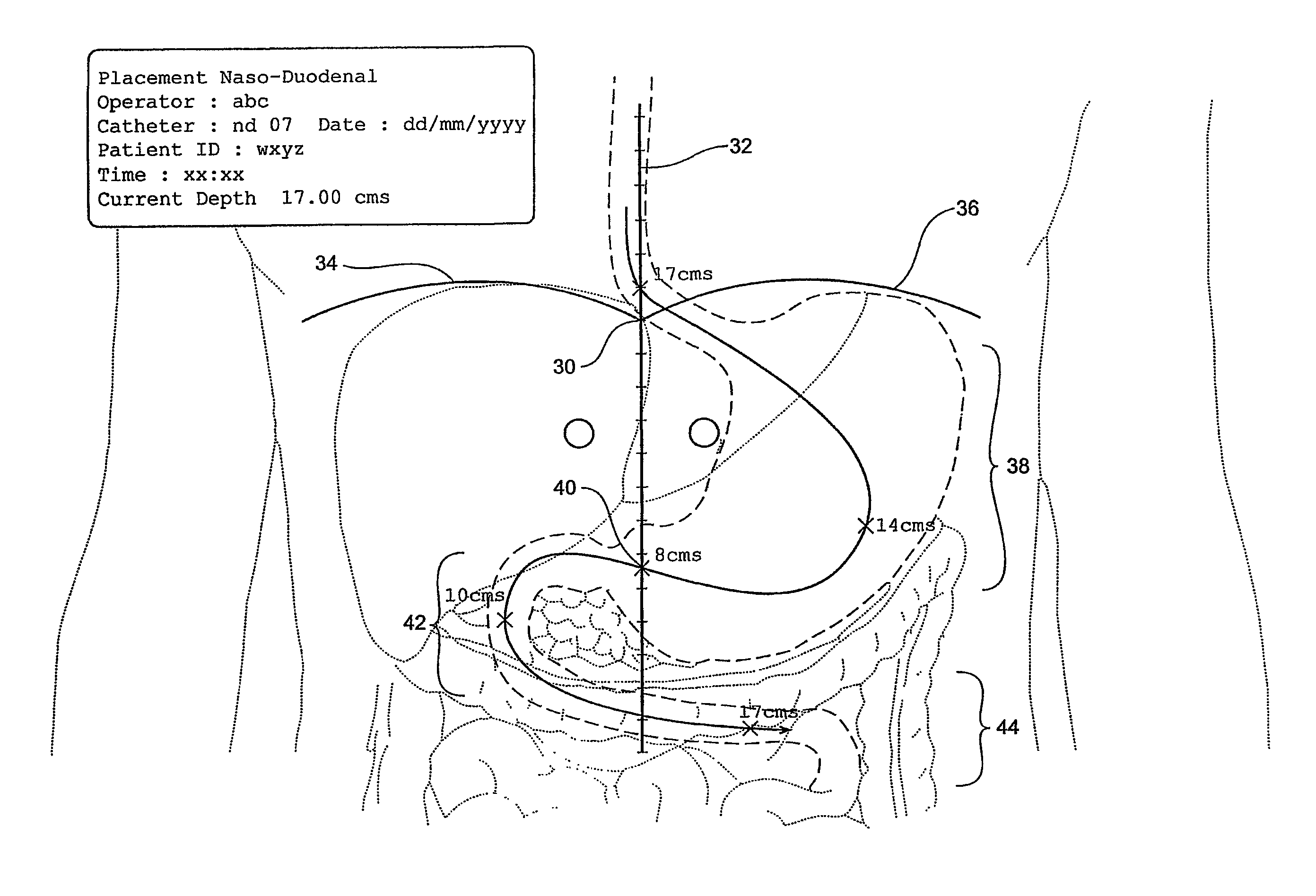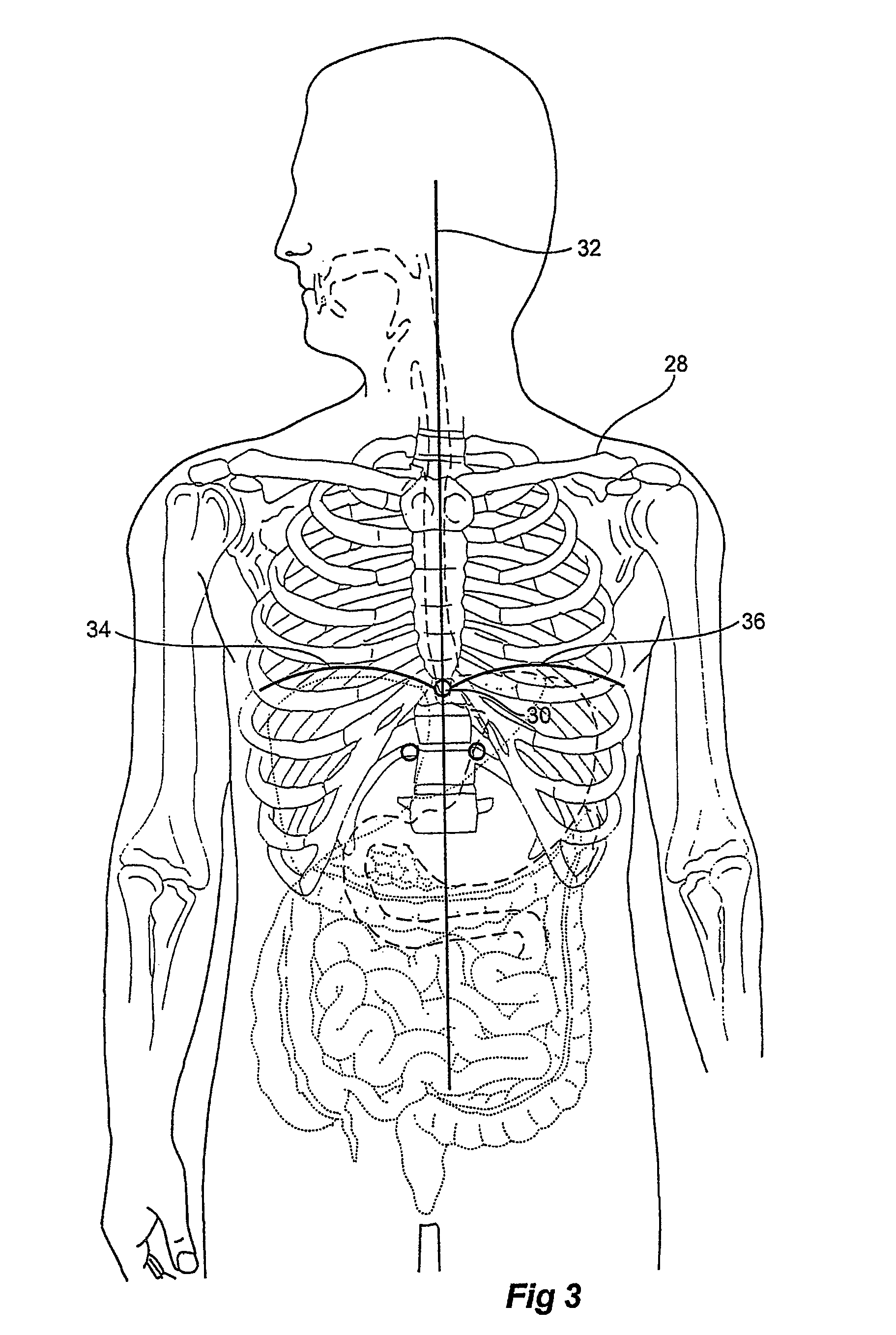Catheter locator apparatus and method of use
a technology of catheter and locator, which is applied in the direction of catheter, application, instruments, etc., can solve the problems of increased risk factors, time-consuming, and difficult placement of the tip into the duodenum and jejunum, and the inability to solve the problem of enteral feeding. not easy, and the effect of significant complications
- Summary
- Abstract
- Description
- Claims
- Application Information
AI Technical Summary
Benefits of technology
Problems solved by technology
Method used
Image
Examples
Embodiment Construction
[0072]FIG. 1 depicts a single lumen catheter having located near its caudal / distal end, a coil, which is used to emit a signal that can be detected by an apparatus not unlike that described in U.S. Pat. No. 5,099,845. That patent is in the name of Micronix Pty Ltd and is hereby incorporated into this specification by reference. The incorporation of the above-mentioned patent does not and should not be construed as an admission of the content of the specification having entered the common general knowledge of those skilled in the art.
[0073]The apparatus of the invention described in the above-mentioned patent provides a means to determine both the depth and position of a coil located on the end of a catheter as well as its orientation. The type of catheter is of no great importance to the principle and method of the invention.
[0074]The depth and position determining apparatus, also referred to herein as the detector apparatus, is generally of the type disclosed in the above-mentioned...
PUM
 Login to View More
Login to View More Abstract
Description
Claims
Application Information
 Login to View More
Login to View More - R&D
- Intellectual Property
- Life Sciences
- Materials
- Tech Scout
- Unparalleled Data Quality
- Higher Quality Content
- 60% Fewer Hallucinations
Browse by: Latest US Patents, China's latest patents, Technical Efficacy Thesaurus, Application Domain, Technology Topic, Popular Technical Reports.
© 2025 PatSnap. All rights reserved.Legal|Privacy policy|Modern Slavery Act Transparency Statement|Sitemap|About US| Contact US: help@patsnap.com



